Cobland Mill / Winery Wall ~ Eglarooze, Rame Peninsula, Cornwall.
Client : Private.

Cobland Mill was built sometime in the early 19th century. It had a sixteen foot diameter overshot water wheel that was used for grinding grain. In the late 19th century the mill was abandoned after which it was used for sheep shearing when it then became known as ‘Lake Barn’. The name ‘Eglarooze’ means ‘chapel on the promontory’ and it refers to a chapel dedicated to St. Winnows that was sited somewhere between Cobland Mill and ‘Lower Eglarooze’ and ‘Higher Eglarooze’ (now called St. Winnows) immediately to the north. The chapel was owned by the priors of St. Germans but fell into disuse after the abolition of the monasteries by Henry VIII in 1539. Small pieces of the chapel have been found at Cobland Mill. The fields surrounding the mill are now owned by the Duchy of Cornwall but from the early 18th century they were part of the Port Eliot Estate. Cobland Mill was bought as an abandoned ruin from the Port Eliot Estate in the year 2000 and then converted into residential use. It is Grade II listed.
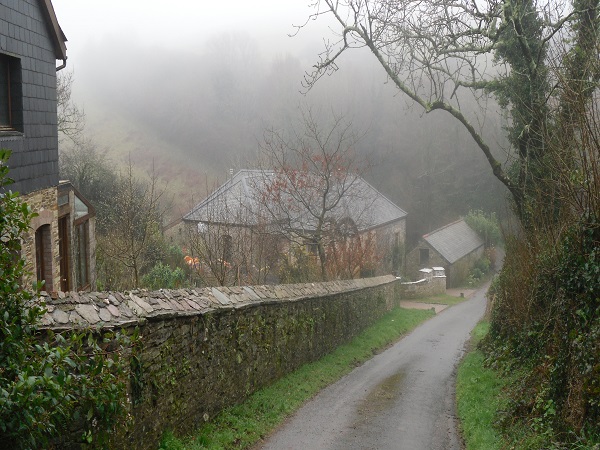
During the 18th century a natural lake opposite the mill existed at the confluence of the streams coming from the Hendra Valley to the north and the Triffle Valley to the south. A reservoir utilising this water was first proposed in November 1883 to serve the parishes of St. Germans, Sheviock and Anthony but it was never built. After the First World War a larger facility was proposed because of the growth in population of the nearby town of Torpoint. A dam was completed in 1922 and the lake which it created held five million gallons of water carried through two large iron pipes down the valley to a pumping station near to Anthony House. The reservoir was abandoned in 1954 and drained. It was bought by the owners who were converting the mill in 2000 and they reinstated the old reservoir into an amenity lake. Planning permission was granted to build a new winery next to the lake and we were ask to carry out the stonework cladding to the winery.
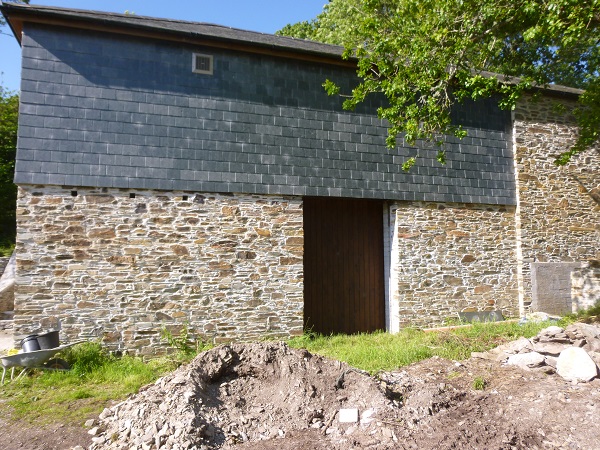
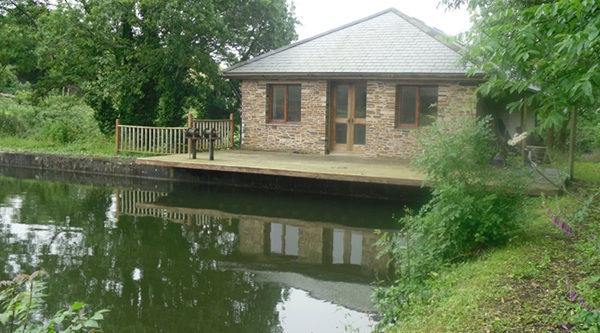
After we had completed the stone cladding for the winery, we were asked to build a tiered retaining wall acting as a planter as well as a new set of steps alongside the winery. All this was going to be built out of natural rustic slate that came from Trecarne quarry on Bodmin Moor. First we started to set out the steps.
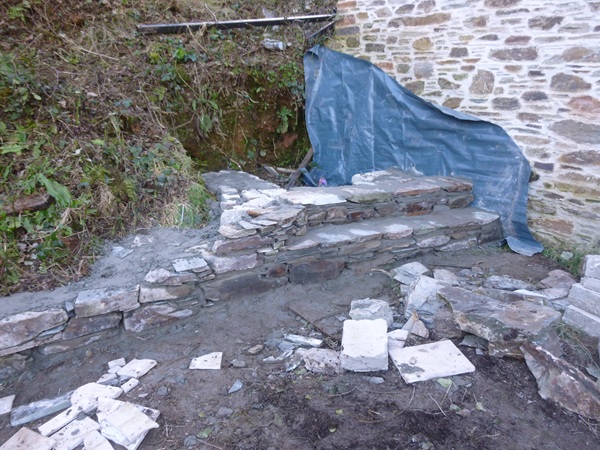
Although the winery had a cavity wall construction, we still built in a Visqueen damp proof membrane where the steps butted up against the building.
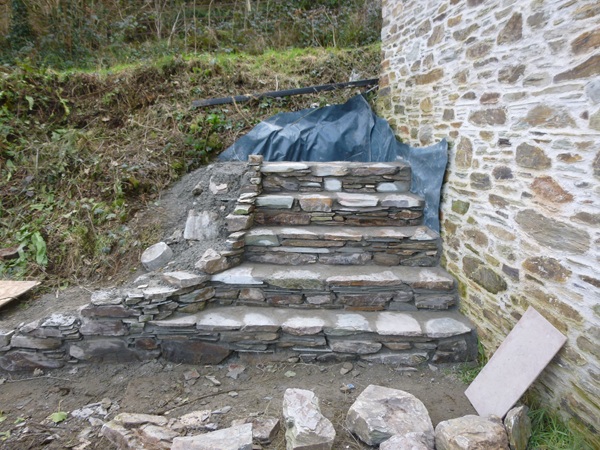
As we built up the steps it was filled in behind with a lean mix concrete to form a solid mass.

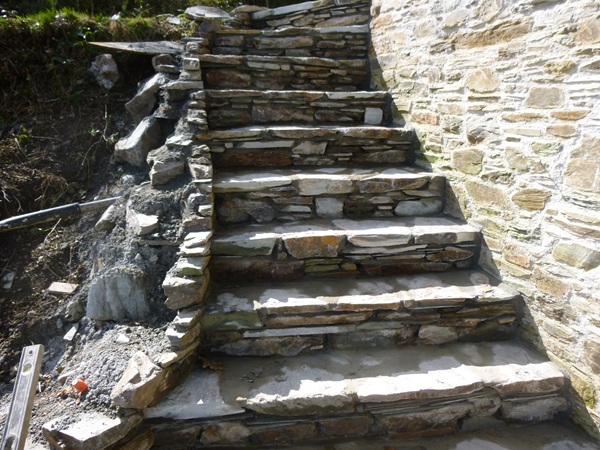
Once the steps were up to a certain height, we then set out the walls that were to form the first of the raised tiered planters that came away from the steps. These raised planters were built on a radius, so profile stakes were placed in to form the radius for us to follow.
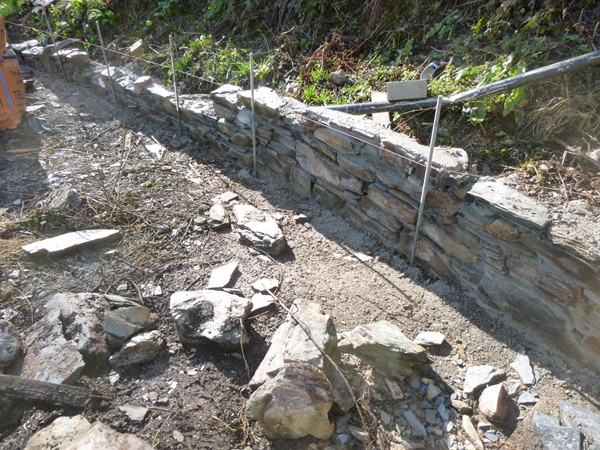
These walls were also backfilled with a lean mix concrete as it had to retain the trackway above it.
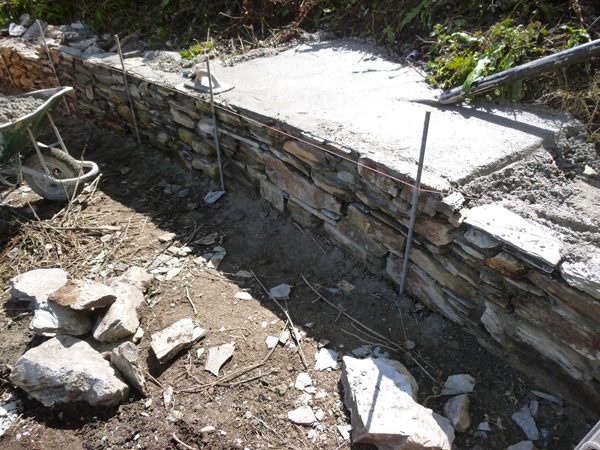
The concrete would also serve as a good foundation for the next second tiered wall.
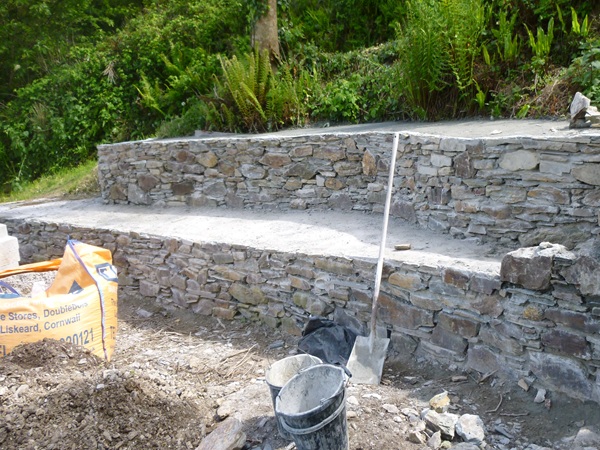
Once the tiered planter was more or less up to its height, we concentrated on bringing the wall up for the side of the steps.

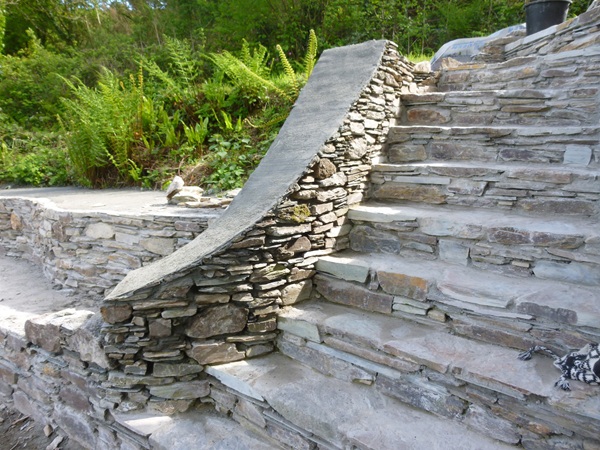
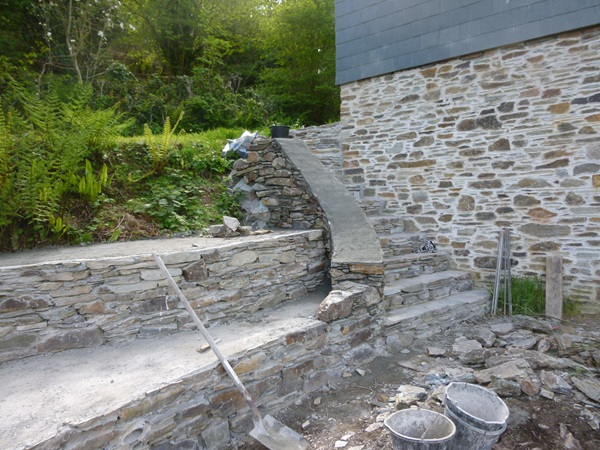
All the stonework was built using a traditional lime mortar and the joints were kept well back to give the stonework a drystone wall appearance.
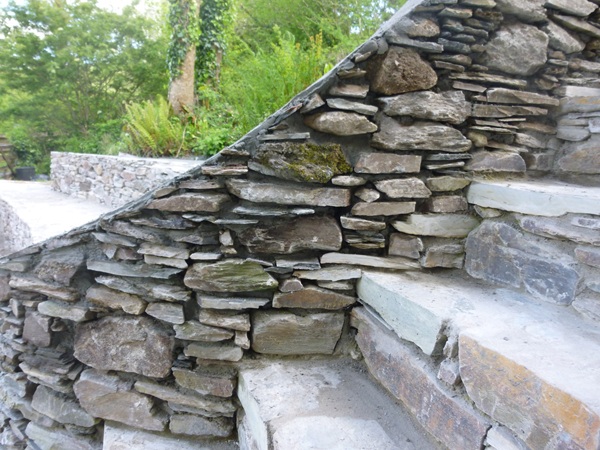
We also added a third and final tier to the raised planters.
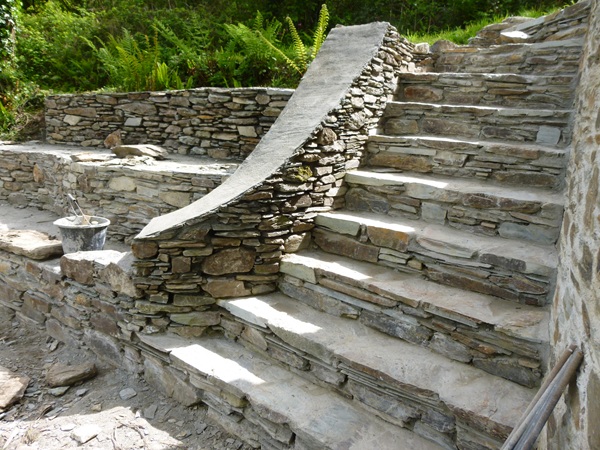

The steps eventually got up to where the corner of the building was, so it was time to set out the winders in the steps to take us further up and around.

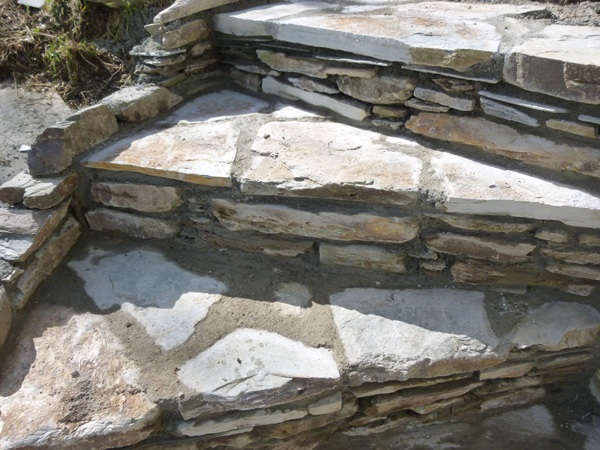
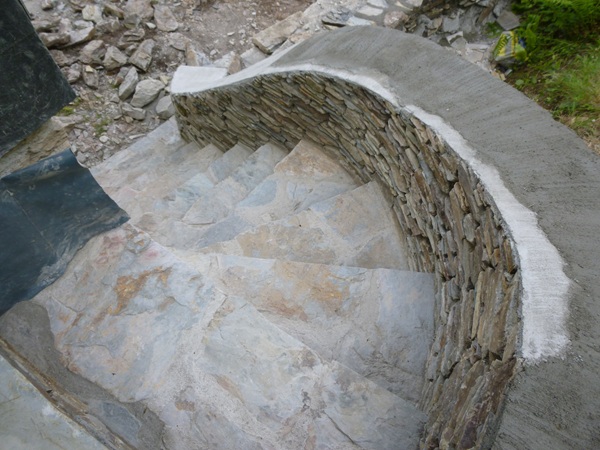
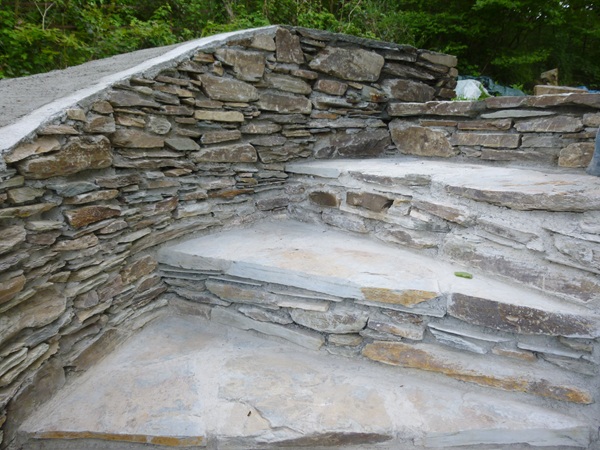
The steps wound all the way around the corner until we eventually arrived at the top.
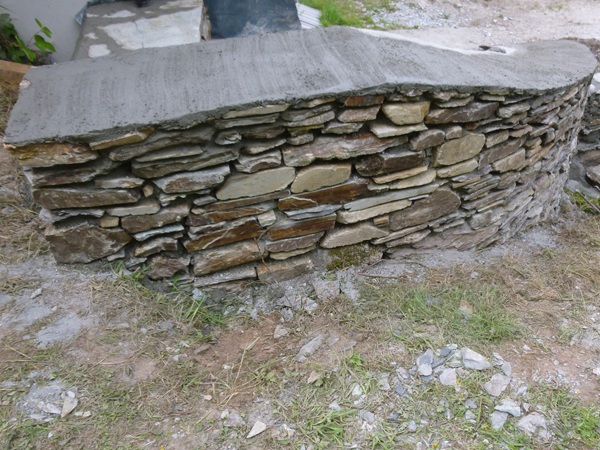
Now that all the steps and walls were finished it was time to cap everything off with a natural rustic slate coping. Drainage had been incorporated into the tiered planters and once the copings were complete, the planters were filled with topsoil, ready for planting.
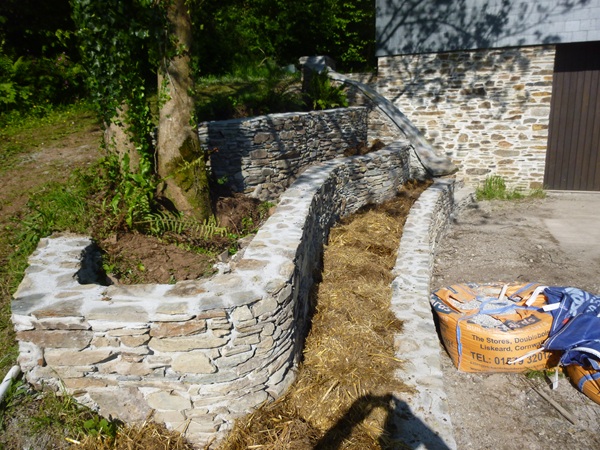
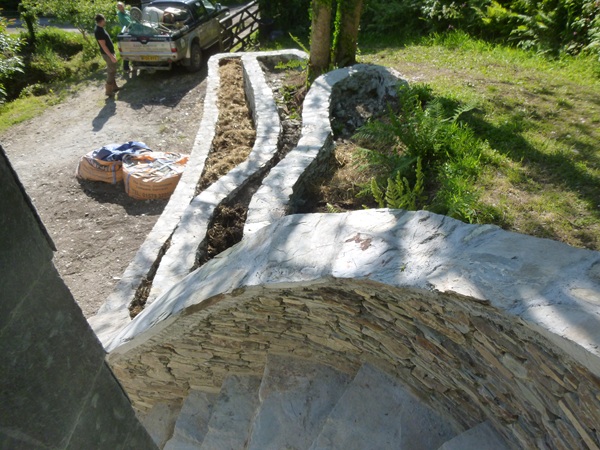
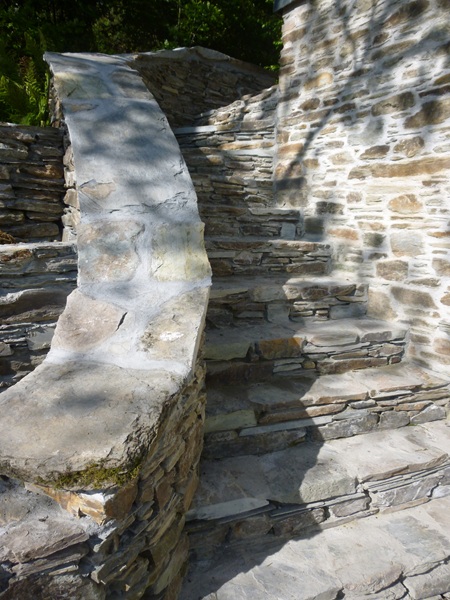
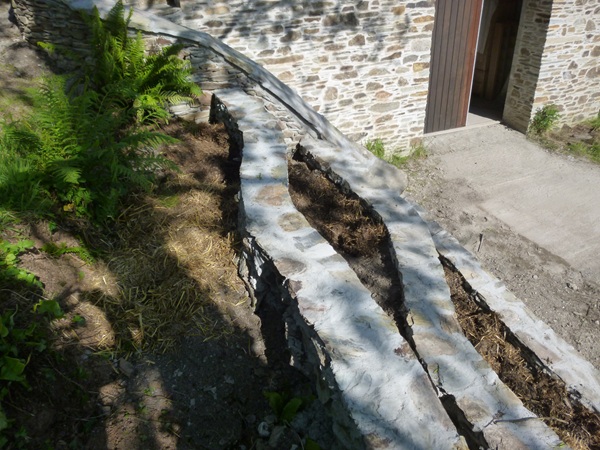
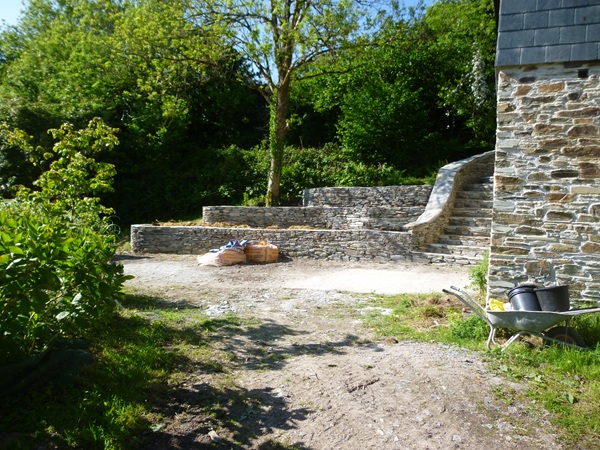
And it doesn’t take long for those plants to get established.
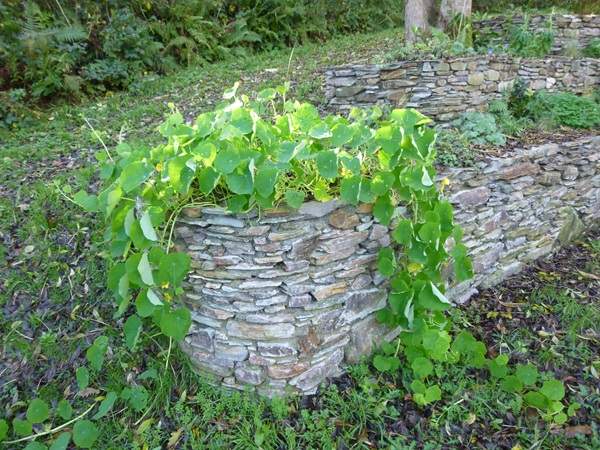
We’ve also repaired and built some new walls at Cobland Mill across the road. Just click here if you want to see this.


